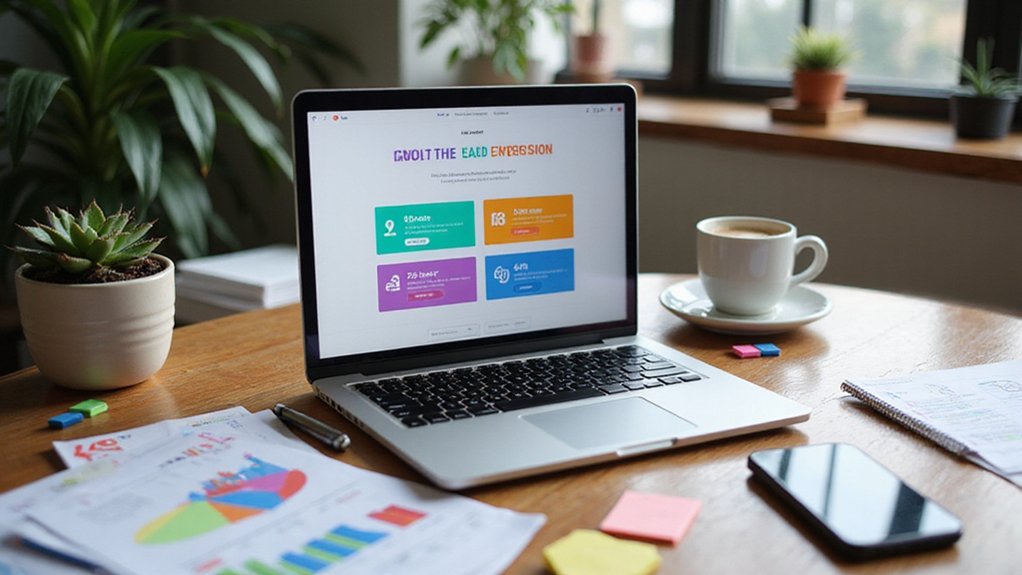The most effective lead magnets for nonprofits—educational e-books addressing mission-critical issues, interactive webinars establishing organizational authority, and practical resource toolkits featuring templates and checklists—consistently outperform traditional outreach methods by transforming passive website visitors into engaged prospects. Organizations achieving conversion rate improvements exceeding 155% understand that strategic content alignment with audience needs, coupled with compelling titles and prominent call-to-action placement, creates the infrastructure necessary for sustained donor cultivation in increasingly competitive attention markets where follow-up sequences ultimately determine long-term supporter retention.

Why do nonprofits—organizations dedicated to causes ranging from environmental conservation to social justice—struggle with the same fundamental challenge that plagues every for-profit enterprise: capturing and converting audience attention into meaningful engagement? The answer lies in a peculiar irony: mission-driven organizations, despite their noble purposes, must employ the same conversion tactics as their profit-maximizing counterparts to sustain their operations.
Lead magnets represent the sophisticated solution to this paradox—digital assets offered in exchange for contact information, transforming casual website visitors into trackable prospects. These value-exchange mechanisms function as nonprofit acquisition tools, boosting opt-in rates from a dismal 1.95% baseline to impressive heights exceeding 41% (with exceptional campaigns achieving 155% increases). Lead magnets should provide immediate download access after supporters submit their email addresses to maximize conversion effectiveness.
Lead magnets transform passive website browsers into engaged prospects, delivering conversion rate improvements that can exceed 155% for strategically designed campaigns.
Educational e-books consistently demonstrate superior conversion performance among nonprofit audiences, particularly when addressing issues central to organizational missions.
The Great Orchestra of Christmas Charity exemplifies this strategy’s potential, generating over 51,000 sign-ups through strategically deployed lead magnets.
Webinars provide interactive engagement opportunities while establishing organizational authority, whereas case studies and success story compilations build credibility through demonstrated impact narratives. Interactive webinars particularly excel at connecting with audiences through more engaging and easier-to-follow experiences compared to text-based resources.
Resource toolkits serve dual purposes: showcasing organizational expertise while delivering practical value to supporters. Checklists, templates, and worksheets appeal to audiences seeking immediate, actionable solutions—a demographic particularly valuable for volunteer recruitment and donor cultivation initiatives. When creating checklists as lead magnets, nonprofits should focus on compelling titles that resonate with their target audience’s specific needs and interests.
Implementation requires strategic alignment between content formats and audience preferences.
Successful lead magnets demand visual appeal, concise presentation, and relevance to target demographics’ immediate needs.
Follow-up communication sequences prove essential for nurturing leads post-signup, transforming initial interest into sustained engagement and eventual financial support.
The mathematical reality underlying lead magnet effectiveness reveals itself through conversion analytics: organizations employing these tools consistently build larger, more engaged supporter bases compared to those relying solely on traditional outreach methods. High-quality content correlates directly with supporter retention rates and donation frequency—metrics that ultimately determine organizational sustainability.
Regular testing and refinement of lead magnet strategies guarantees continuous optimization, while prominent call-to-action placement across digital platforms maximizes uptake potential. For nonprofits managing increasingly competitive attention markets, lead magnets represent essential infrastructure rather than optional marketing enhancement.
Frequently Asked Questions
How Often Should Nonprofits Update Their Lead Magnets to Maintain Effectiveness?
Nonprofits should evaluate their lead magnets quarterly, though conversion rates below 5% demand immediate attention.
When industry practices evolve or target audience challenges shift—which happens more frequently than boards anticipate—updates become essential.
The 41% signup rate increase from effective lead magnets justifies this vigilance.
Organizations clinging to outdated content while wondering why donor acquisition stagnates might consider that relevance, unlike good intentions, requires active maintenance rather than wishful thinking.
What’s the Ideal Email Frequency After Someone Downloads a Nonprofit Lead Magnet?
Nonprofits should initiate contact immediately post-download with automated thank-you sequences, then maintain weekly communication for the first month before switching to bi-weekly intervals.
This cadence prevents donor fatigue while sustaining engagement momentum—a delicate balance that separates sophisticated organizations from those broadcasting into the digital void.
Strategic segmentation allows frequency refinement based on engagement metrics, though many nonprofits inexplicably ignore their own analytics dashboard gathering metaphorical dust.
Can Small Nonprofits With Limited Budgets Create Effective Lead Magnets?
Small nonprofits can absolutely create effective lead magnets despite budget constraints—indeed, resourcefulness often trumps resources.
Digital content leverages existing expertise (staff knowledge costs nothing to package), while collaborations with local businesses create mutual value propositions.
Free design tools democratize professional presentation, and community engagement transforms supporters into co-creators.
The irony? Limited budgets often force creative solutions that outperform expensive alternatives, proving authenticity resonates more than production values.
How Do You Measure ROI on Lead Magnets for Donor Acquisition?
Measuring lead magnet ROI requires tracking lifetime donor value against acquisition costs—a calculation that reveals whether organizations are investing wisely or merely creating expensive digital paperweights.
Smart nonprofits calculate cost per acquisition, monitor conversion rates from lead to donor, and compare channel performance across email and social media.
The key metric? Revenue generated from magnet-acquired donors versus total campaign expenses, evaluated over sufficient duration to capture meaningful retention patterns.
Should Lead Magnets Be Gated Behind Forms or Freely Accessible?
The gating decision hinges on strategic intent rather than dogmatic adherence to either approach.
Gated magnets yield qualified leads with superior conversion metrics—albeit at reduced distribution scale—while ungated content maximizes reach and social amplification.
Nonprofits should consider their primary objective: immediate donor acquisition favors gating (despite privacy friction), whereas brand building and awareness campaigns benefit from unrestricted access.
The ROI calculus previously discussed remains applicable regardless of access methodology.









